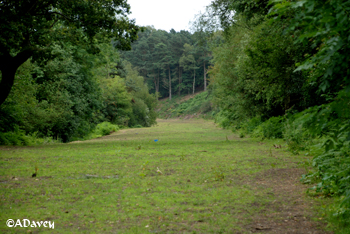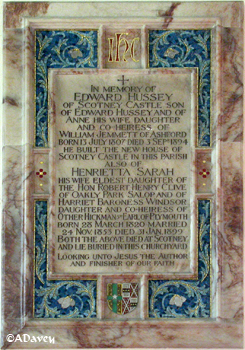
Maps and their interpretation have been and continue to be an integral part of landscape and research projects for Tilia Services. Layers of history often survive by chance or incorporation into other features and are many times more visible through the map record than may be expected. The scale can vary from site to site, mileposts orphaned from their roads no longer travelled, or entire remanant historic field systems in field pastures. Care also needs to be given that fashion is not the main drive behind notice or attention given to particular phases of change in reference to others.
Personal Projects
A review of the Victorian art world and the changing market for prints from artwork exhibited in galleries is looking with particular reference to Edmund Blair Leighton and how his life was affected by the demand for new art as wealth expanded following the industrial revolution and the new education-driven museums and galleries also became significant patrons.
Cultural Associations
There is often magic encountered through the response of a creative spirit in celebration of their surrounding landscape, through art, poetry, sculpture, music or descriptive writing.
Nothing can be straighter and smoother than a Surrey road- when it is on the king's business; then it is a high-road and behaves accordingly: but a Surrey bye-road is the most whimsical companion in the world. It is like a sheep-dog, always running backwards and forwards, poking into the most out-of-the-waycorners, now climbing at a run some steep hummock of the down, and now leisurely going miles about to escape an ant-hill; and all the time... it is stopping to gossip with rillets vagabond as itself, or loitering to bedeck itself with flowers. It seems as innocent of a destination as a boy on an errand; but, after taking at least six times as long as any other road in the kingdom for its amount of work, you usually find it dip down of a sudden into some lovely natural cul-de-sac, a meadow-bottom surrounded by trees, with a stream spreading itself in fantastic silver shallows through its midst, and a cottage half hidden at the end. Had the lane been going to some great house, it would have made more haste, we may be sure.

The Victorian era was a period of great growth in ideas and in social mobility. Philanthropy was widespread as well as the rise in the belief in the value of knowledge for all. Improvements in the understanding of health issues led to the increase in the provision of public parks for the growing urban population across the country. For this reason a significant proportion of Tilia research projects have Victorian themes running through them. Current research includes looking at the growth of botany as a discipline throughout the Victorian period, especially the use of private herbaria as the equivalent of modern identification books.
The Role of the Individual
Historic research is as vulnerable to fashion as the hemline of a skirt. For many years it has been considered a bit 'off' to focus too much on the role of the individual in the grand scheme of things. Yet, in the majority of historic parks in particular it can be impossible to ignore the decision-making abilities involved. It is rare that the actions or indeed inactions of landowners, land managers, designers, craftsmen, foresters, literary enthusiasts, artists or poets can be wholely ascribed to the power of economics or fashions in this country or in the world. Even the apparently predictable Capability Brown was influenced by his clients, their wishes and desires, as well as their often knowledgeable staff. Edward Hussey at Scotney was highly influential through his own actions and decisions.
In one historic park, research into the anomaly of some avenues planted in an era where they were highly unfashionable pointed to a story that was the staple fare of romantic novelists for many years. The story of a profligate gambler losing his estates and gambling his children’s inheritance while holding them captive. His role had a profound influence on the landscape through the sale of the wood to pay off debts and later landowners honouring his predecessors and his lost children through the memorial planting of the avenues.
 Landscape
Landscape Map
Map Biographical
Biographical